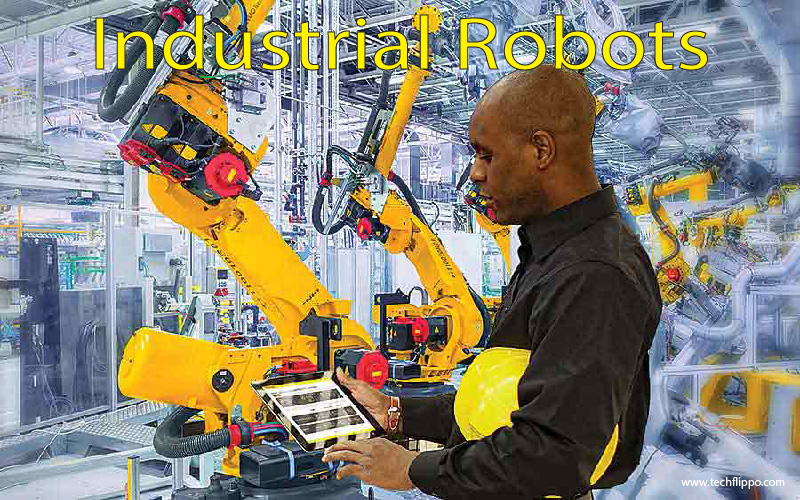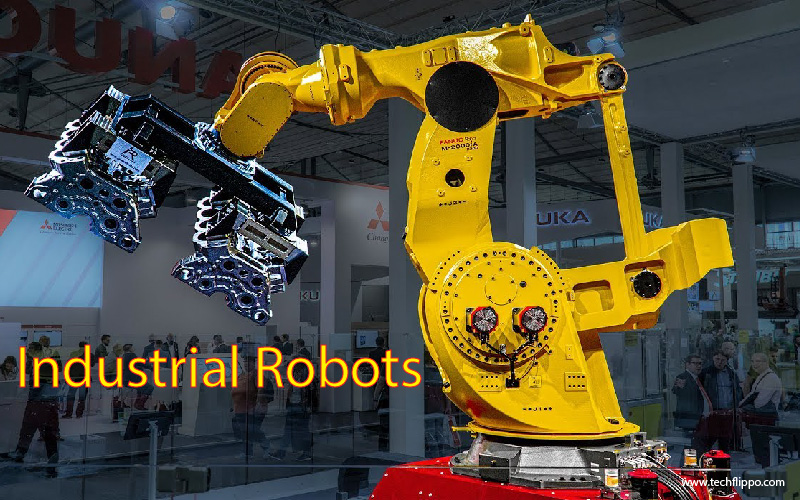The Role of Industrial Robots in Warehousing and Logistics
Welcome to the exciting world where technology meets efficiency – the realm of industrial robots in warehousing and logistics! Imagine a bustling warehouse where robots seamlessly glide through aisles, optimizing operations and streamlining processes. In this blog post, we will delve into the pivotal role that industrial robots play in revolutionizing the way goods are stored, picked, packed, and shipped. Get ready to explore how these mechanical marvels are reshaping the future of warehousing and logistics as we know it. Let’s dive in!

Benefits of using robots in warehouses and logistics
Industrial robots bring a myriad of benefits to warehouses and logistics operations. One key advantage is increased efficiency. Robots can work around the clock without breaks, leading to improved productivity levels. They can handle repetitive tasks with precision, reducing errors and streamlining processes.
Moreover, robots enhance safety in the workplace by handling hazardous materials or operating in risky environments that may be unsafe for human workers. This not only reduces the risk of accidents but also ensures compliance with strict safety regulations.
Furthermore, using robots in warehouses and logistics can lead to cost savings in the long run. While there is an initial investment required for implementing robotic systems, the operational costs decrease over time due to reduced labor expenses and optimized workflows.
Additionally, robots can help businesses meet increasing consumer demands by speeding up order fulfillment processes and improving inventory management accuracy. This ultimately results in higher customer satisfaction rates and strengthens competitiveness in the market.
Types of industrial robots commonly used in warehouses and logistics
Industrial robots play a crucial role in optimizing warehouse and logistics operations. There are several types of industrial robots commonly used in these settings to enhance efficiency and productivity.
AGVs, or Automated Guided Vehicles, are autonomous mobile robots that can transport goods within a warehouse without human intervention. They follow predefined paths using sensors and GPS technology.
Robotic arms are another common type of industrial robot in warehousing and logistics. These versatile machines can perform various tasks such as picking, packing, and palletizing with precision and speed.
Collaborative robots, also known as cobots, work alongside humans to streamline processes like sorting items or loading/unloading trucks. Their advanced sensors allow for safe interaction with workers.
Automated Storage and Retrieval Systems (AS/RS) utilize robotic cranes to store and retrieve goods from high shelves efficiently. These systems help maximize storage space while minimizing manual labor.
The diverse range of industrial robots used in warehouses and logistics contribute significantly to process optimization and cost reduction within the industry.

Case studies of successful implementation of industrial robots in warehousing and logistics
Imagine a bustling warehouse where industrial robots seamlessly work alongside human employees to optimize efficiency. One case study highlights how a major e-commerce company utilized autonomous mobile robots to transport goods within their facility, reducing delivery times and streamlining operations.
In another instance, a global logistics provider implemented robotic arms for sorting packages with precision and speed, leading to higher accuracy rates and faster order fulfillment. These success stories demonstrate the transformative power of integrating industrial robots into warehousing and logistics processes.
Moreover, a third case study showcases how a leading automotive manufacturer adopted collaborative robots for repetitive tasks like palletizing and packaging. By leveraging robotic technology, they achieved significant cost savings while improving workplace safety for employees.
These real-world examples underscore the tangible benefits that industrial robots bring to the warehousing and logistics industry, setting new standards for operational excellence in an increasingly competitive market.
Challenges and limitations of using robots in the industry
Implementing industrial robots in warehousing and logistics comes with its own set of challenges and limitations. One major hurdle is the initial cost involved in acquiring and setting up these advanced robotic systems. Companies need to invest significantly to integrate robots into their operations, which may not always be feasible for small businesses.
Another challenge is the need for specialized technical expertise to operate and maintain these robots effectively. Training employees or hiring skilled technicians familiar with robotics can be a time-consuming process. Additionally, as technology evolves rapidly, there’s a constant pressure to keep upgrading the robots to stay competitive in the market.
Furthermore, integrating robots seamlessly into existing warehouse processes without disrupting daily operations poses another obstacle. Ensuring smooth collaboration between human workers and robotic systems requires careful planning and implementation strategies to avoid any disruptions or inefficiencies in workflow.
Future predictions for the use of industrial robots in warehousing and logistics
As technology advances at a rapid pace, the future of industrial robots in warehousing and logistics looks promising. Experts predict that we will see even more sophisticated robots taking on complex tasks within these industries. These robots are expected to be more efficient, versatile, and capable of handling a wide range of operations.
With the rise of artificial intelligence and machine learning, industrial robots will become smarter and more adaptable to changing environments. They will be able to work alongside human workers seamlessly, enhancing productivity and safety in warehouses.
Moreover, the integration of Internet of Things (IoT) technology with industrial robots will enable real-time data tracking and analysis, leading to better decision-making processes. This connectivity will revolutionize how warehouses operate by providing valuable insights into inventory management and supply chain optimization.
The future holds exciting possibilities for the use of industrial robots in warehousing and logistics. As these technologies continue to evolve, we can expect increased automation, efficiency gains, and cost savings across the industry.
Conclusion: The impact of industrial robots on the future of warehousing and logistics industry
The impact of industrial robots on the future of the warehousing and logistics industry is undeniable. With their ability to increase efficiency, accuracy, and safety in warehouse operations, industrial robots are transforming the way goods are stored, picked, packed, and shipped.
As technology continues to advance and robotic capabilities evolve, we can expect to see even greater integration of robots in warehouses and logistics networks. Companies that embrace this automation trend will likely experience improved productivity and cost savings while staying ahead of competitors who rely solely on manual labor.
In conclusion: Industrial robots are revolutionizing the warehousing and logistics industry, paving the way for a more streamlined and efficient supply chain ecosystem. Embracing these technological advancements will be crucial for businesses looking to thrive in an increasingly competitive market landscape.